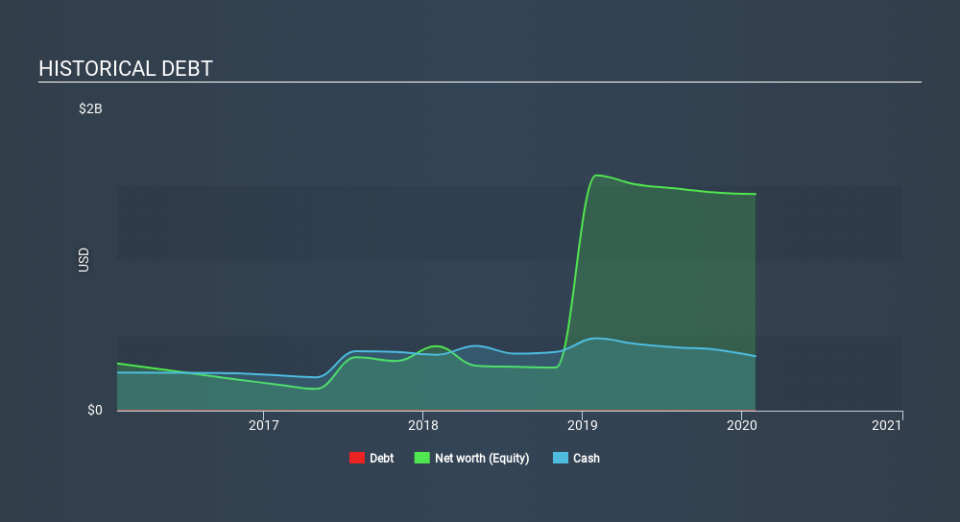We Think Cloudera (NYSE:CLDR) Can Easily Afford To Drive Business Growth

There's no doubt that money can be made by owning shares of unprofitable businesses. For example, biotech and mining exploration companies often lose money for years before finding success with a new treatment or mineral discovery. Having said that, unprofitable companies are risky because they could potentially burn through all their cash and become distressed.
So, the natural question for Cloudera (NYSE:CLDR) shareholders is whether they should be concerned by its rate of cash burn. For the purpose of this article, we'll define cash burn as the amount of cash the company is spending each year to fund its growth (also called its negative free cash flow). We'll start by comparing its cash burn with its cash reserves in order to calculate its cash runway.
See our latest analysis for Cloudera
Does Cloudera Have A Long Cash Runway?
A company's cash runway is calculated by dividing its cash hoard by its cash burn. As at January 2020, Cloudera had cash of US$361m and no debt. Looking at the last year, the company burnt through US$44m. That means it had a cash runway of about 8.2 years as of January 2020. Notably, however, analysts think that Cloudera will break even (at a free cash flow level) before then. In that case, it may never reach the end of its cash runway. The image below shows how its cash balance has been changing over the last few years.
Is Cloudera's Revenue Growing?
We're hesitant to extrapolate on the recent trend to assess its cash burn, because Cloudera actually had positive free cash flow last year, so operating revenue growth is probably our best bet to measure, right now. Notably, its strong revenue growth of 65% over the last year is genuinely cause for optimism. Clearly, however, the crucial factor is whether the company will grow its business going forward. So you might want to take a peek at how much the company is expected to grow in the next few years.
How Hard Would It Be For Cloudera To Raise More Cash For Growth?
There's no doubt Cloudera's revenue growth is impressive but even if it's only hypothetical, it's always worth asking how easily it could raise more money to fund further growth. Companies can raise capital through either debt or equity. Many companies end up issuing new shares to fund future growth. We can compare a company's cash burn to its market capitalisation to get a sense for how many new shares a company would have to issue to fund one year's operations.
Cloudera has a market capitalisation of US$2.3b and burnt through US$44m last year, which is 1.9% of the company's market value. That means it could easily issue a few shares to fund more growth, and might well be in a position to borrow cheaply.
Is Cloudera's Cash Burn A Worry?
It may already be apparent to you that we're relatively comfortable with the way Cloudera is burning through its cash. For example, we think its revenue growth suggests that the company is on a good path. And even its cash burn relative to its market cap was very encouraging. It's clearly very positive to see that analysts are forecasting the company will break even fairly soon. After considering a range of factors in this article, we're pretty relaxed about its cash burn, since the company seems to be in a good position to continue to fund its growth. Taking a deeper dive, we've spotted 3 warning signs for Cloudera you should be aware of, and 1 of them can't be ignored.
Of course, you might find a fantastic investment by looking elsewhere. So take a peek at this free list of interesting companies, and this list of stocks growth stocks (according to analyst forecasts)
If you spot an error that warrants correction, please contact the editor at editorial-team@simplywallst.com. This article by Simply Wall St is general in nature. It does not constitute a recommendation to buy or sell any stock, and does not take account of your objectives, or your financial situation. Simply Wall St has no position in the stocks mentioned.
We aim to bring you long-term focused research analysis driven by fundamental data. Note that our analysis may not factor in the latest price-sensitive company announcements or qualitative material. Thank you for reading.

 Yahoo Finance
Yahoo Finance 
